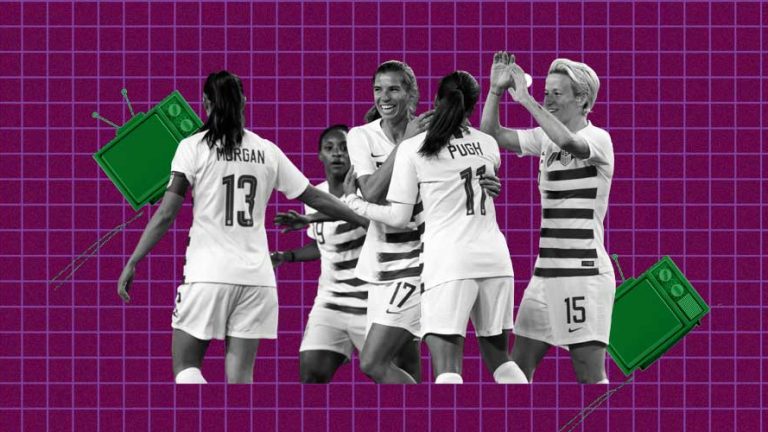As fan and sponsor interest in women’s sports continue to grow, it could lead to a TV revenue boon in the next several years
Why women’s sports could see a Financial boon in future TV deals. The National Women‘s Soccer League’s early matches were nearly exclusively streamed on YouTube. They often only attracted a few thousand viewers at once. And most of them were free. It’s safe to assume that things have altered in the last ten years. The NWSL has signed seven-figure broadcasting contracts with CBS and the Twitch streaming service, which is owned by Amazon. Ratings are rising, and it is anticipated that the revenue from the upcoming agreement or deals would be significantly higher.
According to commissioner Jessica Berman, “I believe maybe it won’t surprise you to know that we expect considerable growth.”
And the NWSL is far from alone in the world of women’s sports.
As fan and sponsor interest in women’s sports continue to grow, and the media landscape continues to shift, several leagues are also nearing the end of their current broadcasting deals. It’s a metaphorical perfect storm, a combination of market and societal factors that could lead to a TV revenue boon in the next several years.
“I think we’re at a convergence point 50 years after Title IX,” said Ellen Staurowsky, a sports media professor at Ithaca College’s Park School of Communications. “I believe the sports industry recognises that by excluding women, they are losing money. Then there’s the push from the other side in the form of consumers… knocking on the door and asking, ‘Where the hell are the women?'”
Deloitte identified women’s sports as “ripe for greater monetization” in a 2020 report, predicting that it will become a $1 billion industry in the coming years. And TV rights fees are expected to be one of the primary drivers of such growth. The NWSL will be the first major entity in women’s sports to negotiate a new contract, as its three-year contract with CBS expires next year. Berman stated that the league has already had preliminary discussions with the network about a renewal, but she did not elaborate on the nature or status of those discussions.
The expiring television contracts come at a critical – and, in many ways, ideal – time for the leagues. Berman described the current climate as “an awakening,” referring to both the public’s attitude toward gender equity and sponsors’ and broadcasters’ realizations that “there truly is untapped potential” in women’s sports.
“It’s been largely under-indexed and ignored for a long time,” said Berman, who was appointed commissioner of the NWSL earlier this year. “And I believe the market is experiencing a massive and necessary overcorrection.”
Last fall, an NCAA-commissioned report on gender equity issues in women‘s college basketball provided public evidence of this market shift. Desser Media, Inc.’s sports rights consultants examined the NCAA’s current sponsorship and rights deals, including one with ESPN that bundles broadcasting rights for the NCAA women‘s basketball tournament with those for championships in 28 other sports. According to the report, the NCAA currently receives $34 million per year from the agreement. However, Desser Media estimates that women‘s March Madness alone will be worth roughly three times that amount starting in 2025, with a value of around $100 million per year.
Year over year, viewership for the 2021 WNBA regular season increased by 49%. And, after drawing no more than 190,000 viewers in its first seven years, the NWSL has averaged nearly 450,000 viewers in games broadcast on CBS.
According to The Washington Post, the NWSL’s current deals with CBS and Twitch are worth approximately $4.5 million and $1 million, respectively. A few games will be broadcast on CBS, with the rest distributed across CBS Sports Network, network streaming service Paramount+, and Twitch. The WNBA has even more broadcast options, with games airing on ABC, ESPN, CBS, NBA TV, Amazon Prime Video, Facebook Watch, and Twitter.
As women’s sports organizations strive to increase both ratings and rights fees, there’s reason to believe sports media companies will see them as wise investments. Women’s sports typically receive strong support from women, who account for more than 42 percent of all sports fans at the college level, according to a recent LEARFIELD study. And women are an important demographic for sponsors.






Add comment